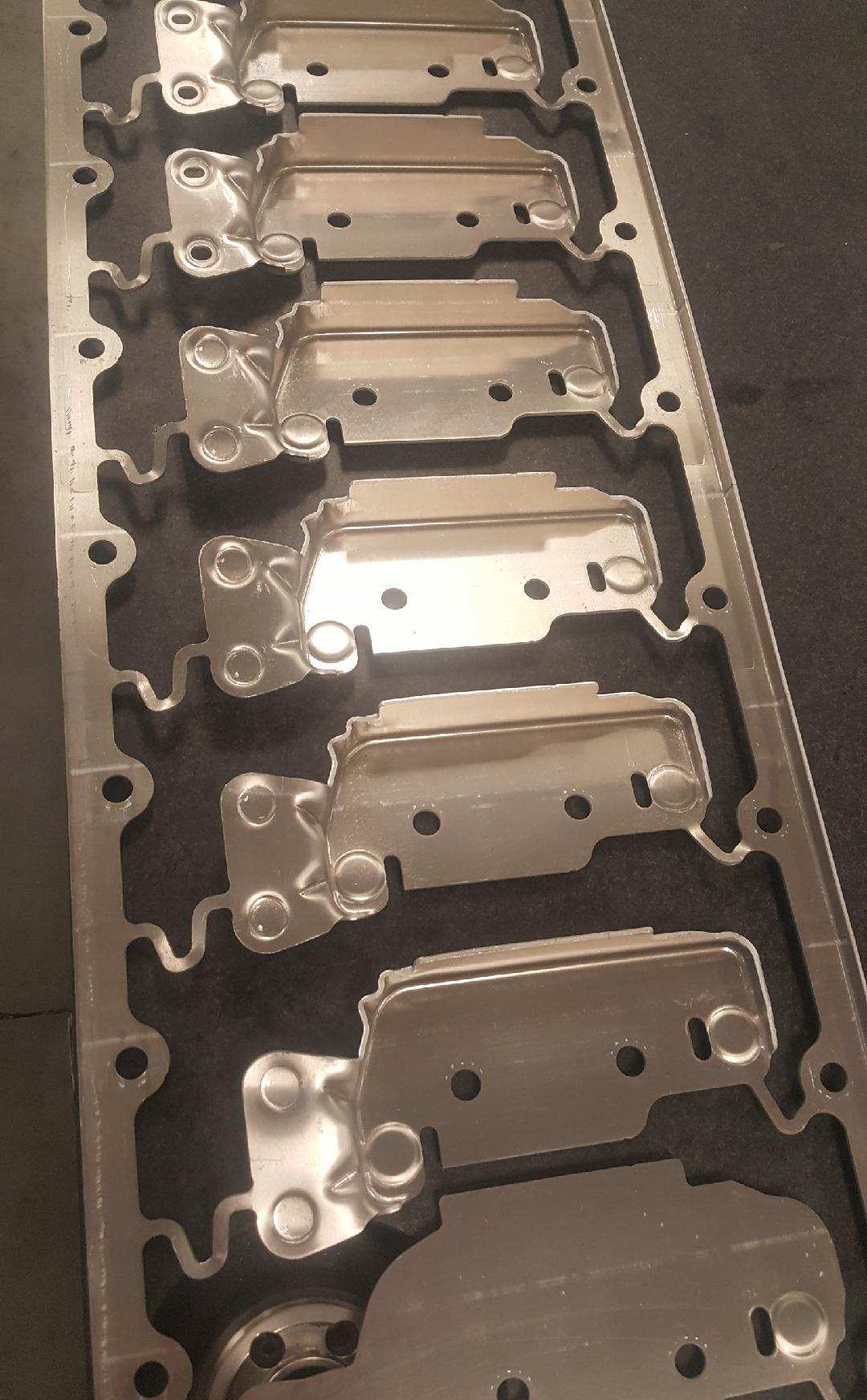Metal Stamping Procedures: From Prototyping to Mass Production
Metal Stamping Procedures: From Prototyping to Mass Production
Blog Article
The Advancement of Metal Stamping Procedures: Developments and Applications
The realm of metal marking procedures has experienced a transformative journey noted by continuous innovation and adaptation to meet the needs of modern-day commercial methods. The applications span throughout a range of industries, each profiting distinctly from the developments in steel marking procedures.
Typical Steel Marking Methods
Standard metal marking strategies have actually long been the foundation of producing procedures in various markets as a result of their efficiency and precision. The procedure includes developing a steel sheet or coil into a desired form by pressing it between a die and a punch. This method is commonly utilized for generating large amounts of components with high precision at a rapid speed.
Among the key benefits of typical steel stamping techniques is the capability to maintain limited tolerances, making sure that each part meets the called for specs consistently. This degree of accuracy is crucial in industries such as automotive, aerospace, and electronics, where also minor inconsistencies can result in significant issues.
Furthermore, conventional metal stamping methods supply cost-efficient services for automation contrasted to other manufacturing techniques. The capability to stamp parts in quick sequence lessens manufacturing time and reduces labor expenses, making it an eye-catching option for companies seeking to optimize their manufacturing procedures.
Introduction of High-Speed Stamping

One of the key benefits of high-speed marking is its capacity to preserve accuracy and uniformity even at accelerated processing rates. This precision is crucial in markets where limited tolerances and elaborate styles are required. Additionally, high-speed stamping allows for the handling of a vast array of materials, consisting of aluminum, stainless-steel, and copper, additional broadening its applicability across various sectors.
Furthermore, the emergence of high-speed marking has actually made it possible for suppliers to fulfill the expanding need for complicated elements in sectors such as auto, aerospace, and electronics (Metal Stamping). By leveraging the speed and accuracy of high-speed marking technology, firms can improve their competitiveness in a swiftly evolving market landscape
Innovations in Tooling Innovation
With the development of high-speed marking making it possible for improved accuracy and efficiency in steel forming procedures, the field of steel stamping has seen considerable developments Check Out Your URL in tooling technology. Tooling technology plays a vital duty in metal marking operations, affecting variables such as product high quality, production speed, and overall cost-effectiveness.
By utilizing these innovative products, tooling suppliers can create dies and mold and mildews that hold up against the high pressures and temperatures entailed in metal stamping procedures, resulting in longer device life and better production performance. In general, these innovations in tooling technology have actually revolutionized the metal marking industry, permitting suppliers to accomplish higher degrees of accuracy, productivity, and price savings.
Combination of Automation in Stamping
As automation remains to reshape the landscape of steel marking procedures, the combination of automated systems has actually become significantly widespread in modern production facilities. Automated systems provide countless advantages in metal marking, consisting of increased effectiveness, boosted precision, and enhanced safety. By click to find out more incorporating automation right into stamping processes, producers can lower cycle times, minimize material waste, and maximize manufacturing throughput.
Among the vital elements of automation in stamping is using robot arms for tasks such as product handling, component adjustment, and quality assessment (Metal Stamping). These robotic systems can do repeated and labor-intensive jobs with speed and precision, freeing up human drivers to focus on even more complicated procedures. In addition, automation enables real-time tracking and modification of stamping processes, bring about greater general process control and quality guarantee
Additionally, the integration of automation in stamping makes it possible for manufacturers to accomplish consistent component high quality, meet tight resistances, and boost total productivity. As modern technology remains to breakthrough, the function of automation in steel marking processes is expected to broaden better, driving technology and effectiveness in the manufacturing industry.
Applications Throughout Diverse Industries
Integrating metal marking processes throughout diverse sectors showcases the versatility and versatility of this production technique. In addition, the device industry advantages from steel marking procedures to produce components for refrigerators, cleaning equipments, and other family devices. The adaptability of metal stamping procedures makes it a useful production method throughout numerous markets, demonstrating its importance in modern-day production procedures.
Conclusion

Report this page